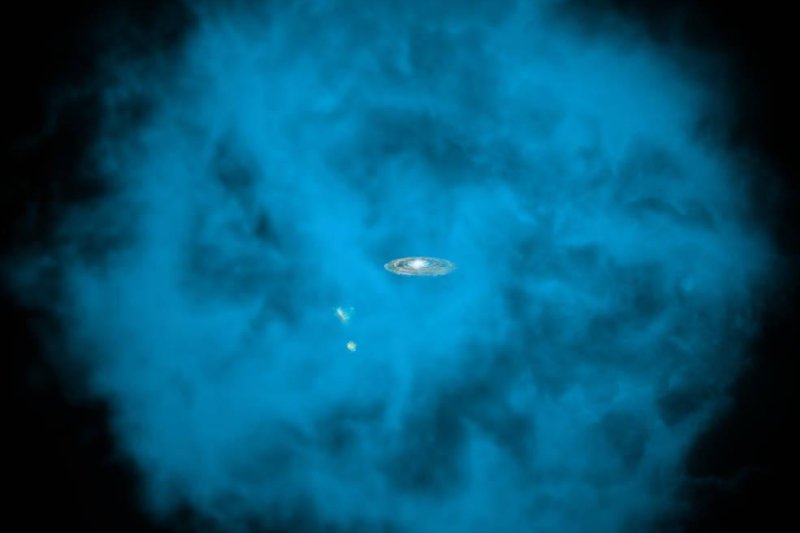The Milky Way's disk is surrounded by a massive, super hot ring of ionized plasma known as the halo. New research suggests the halo is spinning in the same direction as the disk. Photo by NASA/CXC/M.Weiss/Ohio State/A Gupta et al
GREENBELT, Md., July 25 (UPI) -- Astronomers have discovered that the Milky Way galaxy's halo -- an expansive super hot sphere of old stars and globular clusters surrounding the galactic disk -- is spinning.
According to new analysis of old data collected by XMM-Newton, a European Space Agency telescope, the Milky Way's halo is spinning in the same direction and at nearly the same speed as the Milky Way's disk. The disk is the portion of the Milky Way that is organized into four spiral arms and contains most of the galaxy's stars and planets.
"This flies in the face of expectations," Edmund Hodges-Kluck, assistant research scientist at the University of Michigan, said in a news release. "People just assumed that the disk of the Milky Way spins while this enormous reservoir of hot gas is stationary -- but that is wrong. This hot gas reservoir is rotating as well, just not quite as fast as the disk."
Astronomers measured the halo's spin direction and rate by measuring the shifting wavelengths of light emitted by very hot oxygen.
The discovery of the halo's movement promises to illuminate the early evolution of the Milky Way galaxy. Researchers believe the reservoir of hot gas played a significant role in shaping the early galaxy's formation. It's also been identified as a hiding place for some the Milky Way's missing matter.
Almost all galaxies are found to host less matter than would be expected. Astronomers believe most of the missing matter is dark matter -- measurable only by its effect on visible matter. But the recent findings suggest at least 20 percent of the Milky Way's missing matter is hiding in the halo.
"The rotation of the hot halo is an incredible clue to how the Milky Way formed," said Hodges-Kluck. "It tells us that this hot atmosphere is the original source of a lot of the matter in the disk."
The latest discovery is detailed in a new paper published in the journal The Astrophysical Journal.
"Now that we know about the rotation, theorists will begin to use this to learn how our Milky Way galaxy formed -- and its eventual destiny," concluded Joel Bregman, a professor of astronomy at Michigan. "We can use this discovery to learn so much more -- the rotation of this hot halo will be a big topic of future X-ray spectrographs."















